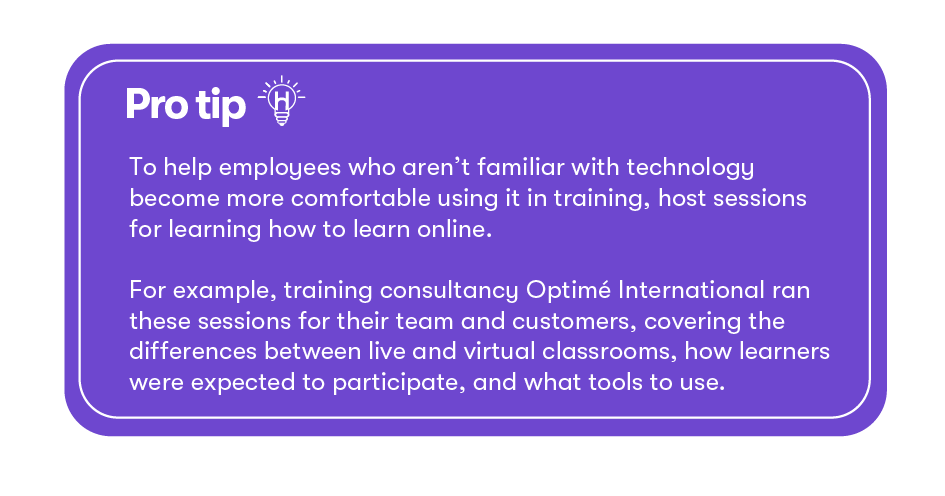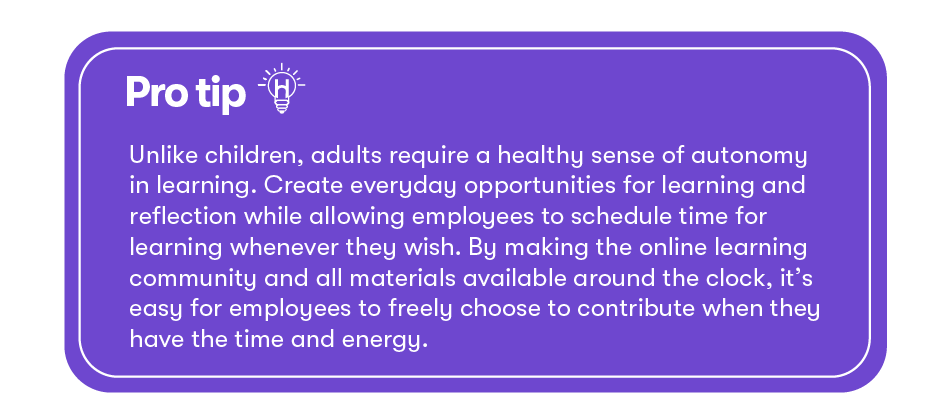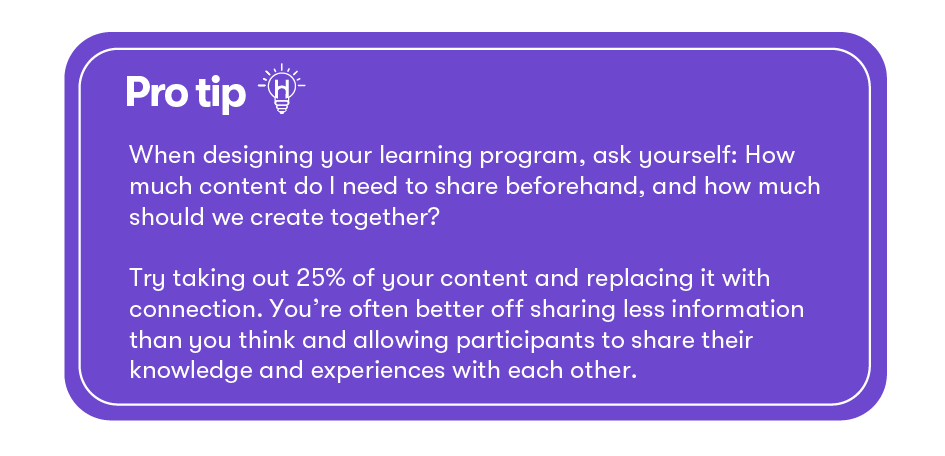
Upskilling & reskilling: Why it’s more important than ever, and how to do it right
Upskilling and reskilling the workforce is one of the biggest focuses of learning and development (L&D) teams at the moment.
Half of all employees will need reskilling by 2025, according to the World Economic Forum’s Future of Jobs Report. And nearly 60% of HR leaders stated that building critical skills and competencies will be their number one priority in 2022, according to a Gartner survey.
So, what’s driving these priorities? Disruptions created by COVID-19, the shift to hybrid work, the rise of AI and automation, and the global war for talent play a big role. Over the past two years, organizations have had to rethink their work models and systems to adapt to the rapidly changing work environment.
This article outlines why upskilling & reskilling is especially important today, and includes concrete tips you can apply in your hybrid work environment.
Why upskilling & reskilling is crucial in today’s work environment
Before we get into the value of employee upskilling & reskilling, let’s start with some definitions.
Upskilling involves helping employees develop new, advanced competencies that relate to their current position. It’s about taking existing skills to the next level.
Reskilling involves helping employees learn new skills to take on a different role within their current organization. It’s about updating skill sets to switch lanes within the company.
Upskilling helps organizations create more specialized workers, and reskilling helps to create more adaptable ones. Learning new skills in both of these contexts is more critical than ever due to the impacts of the pandemic and the increase of automation.
Despite the rise of AI and automation, machines aren’t stealing our jobs. Even more jobs (97 million, according to the World Economic Forum) may emerge that are more adapted to the division of labor between people and machines—and employees will need the skills to succeed in this new way of working.
Economies are shifting from an age of production to an age of imagination, according to Deloitte. Critical thinking, problem solving, emotional intelligence, and collaboration are among the most important skills to thrive in organizations today.
4 tips for building an upskilling & reskilling strategy in a hybrid work model
While HR leaders rank worker adaptation and reskilling as a top priority, 40% said they can’t build skill development solutions fast enough to meet evolving skill needs, according to Gartner.
77% of CFOs believe their company’s limited internal expertise and resources for training is mainly what’s hampering the learning and development process of their employees, according to a 2022 Deloitte survey.
Consequently, workers don’t feel equipped for the future of work. Less than one in five employees are receiving training relative to the future of work, according to a Howspace survey.
How can you start bridging the skills gap? Keep reading for concrete tips to build a reskilling & upskilling strategy in the hybrid workplace.
1. Identify the skills you need
Before you launch a new learning or training program, take a step back and ask yourself: What skills are needed within the organization to be successful in the short and long-term?
Pinpoint your business goals and outline what behaviors and actions are needed to get there. Focus your attention on what you want to come out of your learning program before you design what goes into it.
For example, your learning objectives might include:
- The ability to use a new software
- Understand cybersecurity measures
- Progress with diversity, equity, and inclusion (DEI)
After mapping out the skills needed to drive your business forward, consider what learning methods will work best for your hybrid team.

2. Shift to a continuous learning model
Organizational learning is shifting from a traditional, formal approach to a more continuous, flow-of-work model where employees learn by engaging in real work situations. On-the-job training supports employee productivity, engagement, and retention—and it’s one of the most cost-effective strategies for organizations to upskill their staff.
85% of CFOs believe that the best strategy to skill, reskill, and upskill their employees is to offer them practical, on-the-job experience, according to the aforementioned Deloitte survey. Coaching and mentoring, on-the-job exercises, microlearning, and peer-to-peer-learning are some of the most effective methods to develop employees’ skills.
Keep in mind that upskilling is not a one-and-done thing. As the business landscape evolves, so do the skills employees need to succeed. Since employees have to continually adapt to new technologies and skill requirements, organizations need to support a culture of continuous learning—where learning is integrated into employees’ daily work.

3. Prioritize collaboration over information sharing
In the traditional learning model, the learner is a consumer: they go to a classroom to take in knowledge from a facilitator. With the new learning model, the learner is an active contributor and takes accountability for their learning experience. The relationship between the facilitator and learner is more balanced, where they both share and receive knowledge.
The best approach to organizational learning is to allow people to discuss, share their knowledge, and listen to each other. The facilitator still shares advice and information, but also invites participants to share their experiences and knowledge on the topic. This is collaborative learning done right.
Often, less content and more connection is the key to achieve your organization’s learning objectives.

4. Invest in people, not just technology
While technology plays a crucial role in the hybrid workplace, what’s even more important than your tools are the people using them.
Technology isn’t seen to be helping with collaboration—which is crucial to workplace learning—according to a Howspace survey. 58% of workers haven’t had new technology rolled out to help with collaboration, and of those that have had technology rolled out in the last 18 months, just under 1 in 3 (32%) have found the technology very helpful.
The challenges that come with rolling out new technology, according to the survey respondents, include:
- The company is spread across multiple time zones and languages
- There is no clarity around what technology we should be using and how we should be using it
- We have implemented too many new technologies and it is confusing
- Our company is too big for it to work properly
Evidently, technology won’t do all the work for you when it comes to driving progress with your learning programs—especially in the hybrid work context.
You need to have a clear learning journey in place, and use an online learning platform that allows you to design meaningful learning experiences that center on collaboration and engagement.
Curious about how you can use Howspace to design a learning experience? Give it a try and start a free trial today!